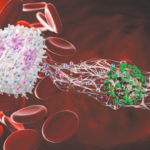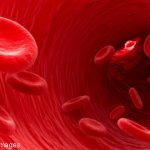An understanding of the mechanisms underlying NET-mediated inflammation will empower clinicians to target therapies that can mitigate disease activity & improve outcomes in patients with lupus.


Katie Robinson |
An understanding of the mechanisms underlying NET-mediated inflammation will empower clinicians to target therapies that can mitigate disease activity & improve outcomes in patients with lupus.

Katie Robinson |
Systemic lupus erythematosus (SLE) is a prototypic autoimmune disease that primarily affects young women and causes a wide range of inflammatory manifestations. Its hallmark is the production of antibodies to components of the cell nucleus (anti-nuclear antibodies [ANAs]). …

Guy Katz, MD, Joanna Marco, MD, & Jean Liew, MD, MS |
One of the most fun events at every annual meeting is the ACR Knowledge Bowl. In this quiz show-style trivia game, fellows form teams to compete for top prizes. There’s a charismatic host, a panel of esteemed judges and an auditorium packed with cheering spectators. Beyond the fun of competing against your peers from other…

PHILADELPHIA—One of the great advancements in the field of rheumatology in recent years has been the increased understanding of various stages of disease in rheumatoid arthritis (RA), including what is termed subclinical rheumatoid arthritis. However, questions remain regarding whether to treat patients with subclinical disease and whether treatment of these patients has implications in preventing…

University of South Florida Rheumatology Fellowship Program: Anastasiya (Stacy) Bagrova, MD; Shreya Gor, MD; Joanne Valeriano-Marcet, MD; Larry Young, MD; & John Carter, MD |
Spondyloarthropathy (SpA) can be difficult to diagnose, with rheumatologists sometimes relying on classification criteria designed for clinical trials. Research examines how the use of MRIs affects the finding of bone marrow edema and the diagnosis of axial SpA.

University of Chicago School of Medicine: Lauren He, MD; Ana B. Arevalo, MD; & Kichul Ko, MD |
Research has revealed how the prevalence of anti-nuclear antibody (ANA) positivity has changed over the past 25 years, raising questions about the role of ANA in autoimmunity and disease.

University of Chicago Medicine: Lauren He, MD; & Cuoghi Edens, MD |
A study was able to quantify the transference of tumor necrosis factor (TNF) inhibitors from mother to fetus during pregnancy. Overall, the researchers found low levels of transfer for the treatments studied.

Duke University Rheumatology Fellowship Program: Catherine Sims, MD; Sonali Bracken, MD, PhD; Megan Milne, MD; Nathaniel Harris, MD, PhD; Poorva Apte, MD; Lena Eder, MD; Lisa Criscione-Schreiber, MD, Med; Megan Clowse, MD; & David Leverenz, MD |
Rheumatologists play a critical role in the reproductive health of their patients, but only half of rheumatologists currently ask their patients about reproductive health or family planning issues. A new guideline seeks to change that.

Medical University of South Carolina Rheumatology Fellowship Program: Sean Carter, MD; Jessica English, MD; Brad Collins, DO; Ana Tucker, MD; Jen Schmidt, MD; Whitney Elg-Salsman, DO; & Faye Hant, DO |
With both impressive sensitivity and specificity in capturing active large vessel vasculitis, a positron emission tomography (PET) scan is a potential tool for determining disease activity and predicting relapse in patients with large vessel vasculitis.

MedStar Georgetown Washington Hospital Center: Leen Al Saleh, MD; Ajita Acharya, MD; Elena Obreja, MD; & Akrithi U. Garren, MD |
Research has found dual-energy computed tomography (DECT) may be a non-invasive and cost-effective option to help rheumatologists more accurately diagnose gout.